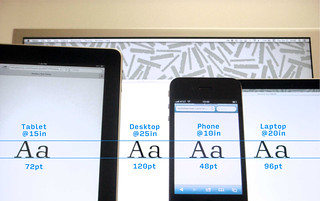
I admit I’ve always been fascinated by various fonts. The power they hold to unlock different feelings and moods through merely having ‘feet’ or not has always been quite interesting to me. How, by changing between them, the reader can be affected in some way. Just by the shape of the words themselves. Not just their content, but the form itself.
Of course, this is pretty common knowledge. We all know this on some level, don’t we? Spend enough time researching things on the Internet and you will, inevitably, run into some fonts that pain your eyes. Those that you react to very strongly. And those that you don’t react to at all, seemingly. Yet, that very un-reaction, is a reaction of sorts, too, right? Due to our cultural assumptions, some, like Old Style font families, hold a greater seriousness for us. And others, like Decorative font families, are less serious and more playful.
I think that was what I liked most about The Non-Designer’s Design Book. That end part on the various fonts and how to mold them in different ways. What was important for which functions — larger size here, changing the direction there. And, when to use different colors to make certain information “pop” over others on the same page. To put it in Williams’ own words, “If you can put the dynamics of the relationship into words, you have power over it” (192; original emphasis). By knowing the problem, you can shape your response in a better way.
(Don’t even get me started on web fonts and CSS measurements across browsers, either. That is a black hole of never returning.)

Comments:
Sarah Camp’s “Week 8 – Contrast, Color, & Type Face” (Comment)
I liked Sarah’s application of Williams’ ideas in her personal business card. Plus, you know, her titles were enjoyable for the implementation of the same ideas on a small scale.
I spent time thinking and blogging about fonts as well. I don’t think most beginning designers (or wanna-be designers) give font as much thought as it deserves.I like what you said about the “un-reaction” actually being a reaction–and, I would have to say for advertising and communication purposes, it’s probably the WORST possible reaction. I like how Williams “gave us words” for these ideas so we can begin to have power over them.
Dan, I love the way you think. Well, maybe I don’t know the way you think, but I love the way that your thinking shows up in your writing. Good fonts, bad fonts, funny fonts alike. Yes, specific form is important, and we do gain an additional layer of meaning from form, but your content supersedes form. For example, WordPress limits our use of fonts (at least my use is limited and I don’t see many variables in the post above), but you have successfully made your point. Your affinity to fonts resonates with my own affinity to the concrete; keep thinking out loud – I’m listening.
You made fonts sound so mesmerizing by the way you described them. Which I think is spot on for their purpose. They do have the purpose to convey a theme, feeling, tone in a design through the choice. Font is a underrated aspect in a lot of ways. You just don’t hear about it a lot and it is so important- so good to really get the discussion flowing about this!